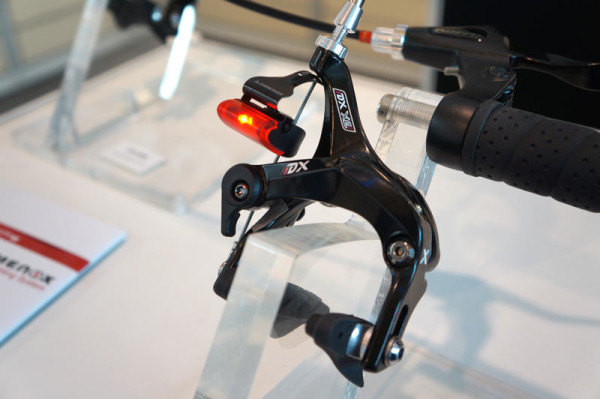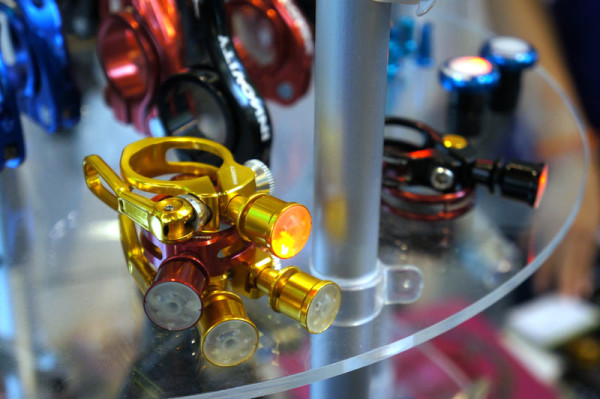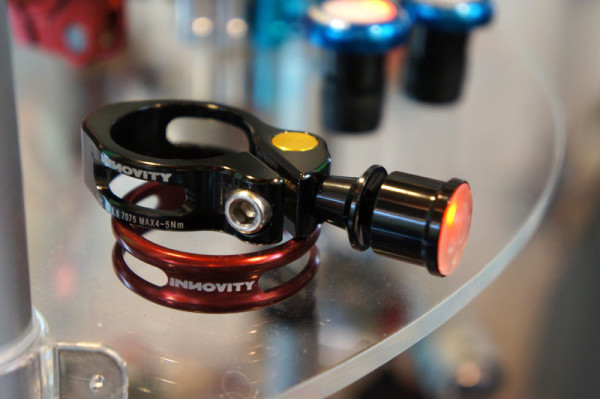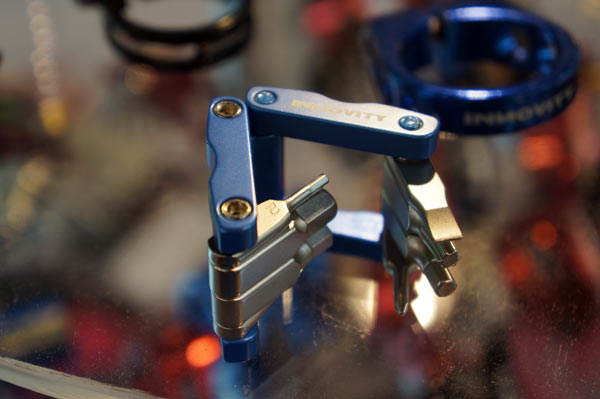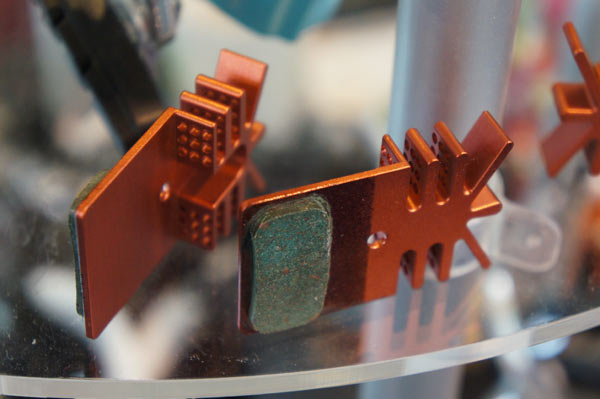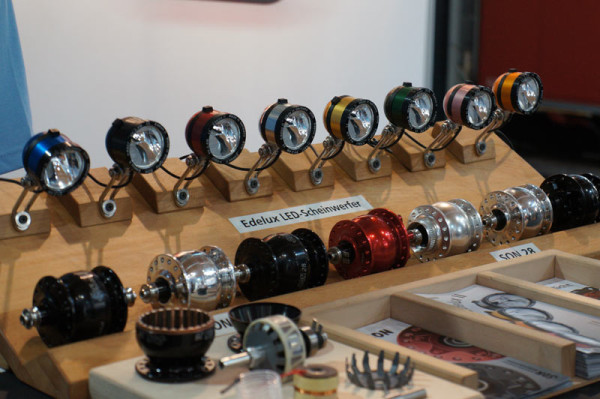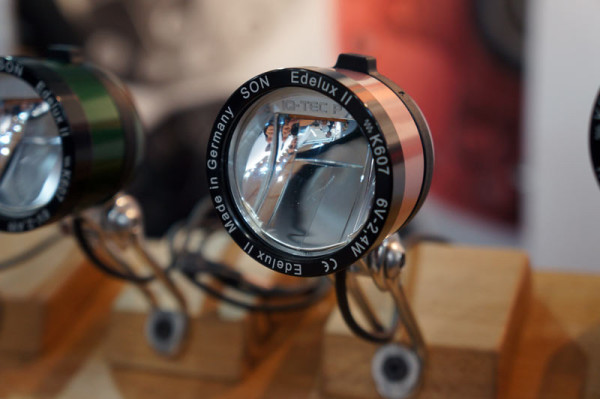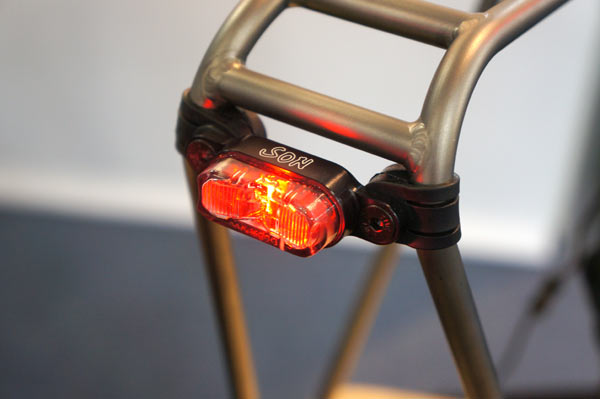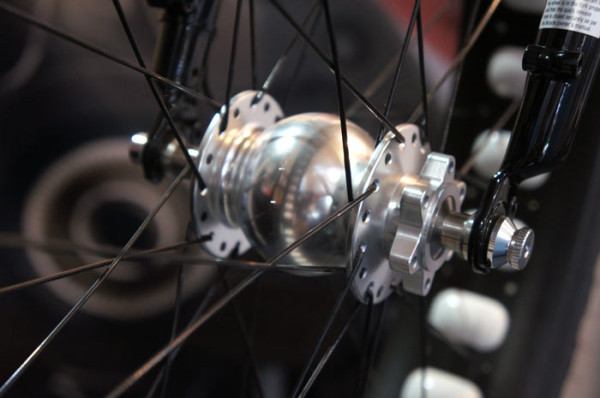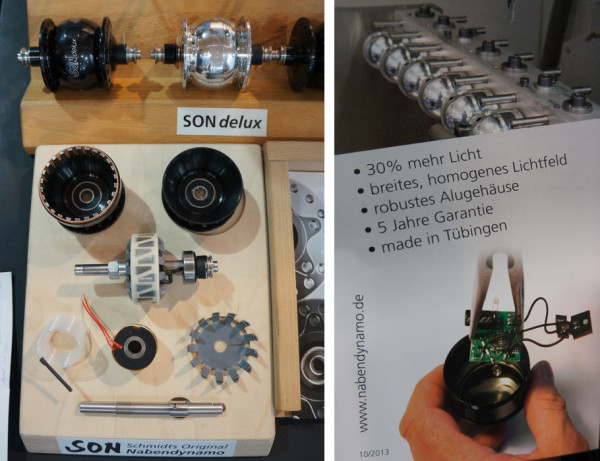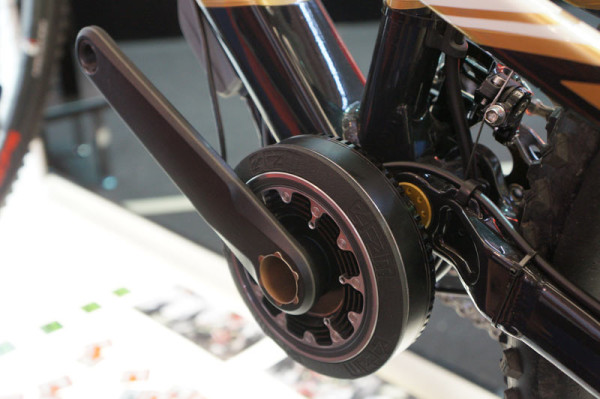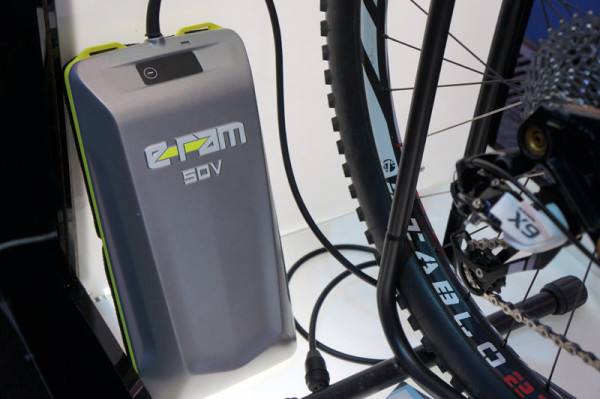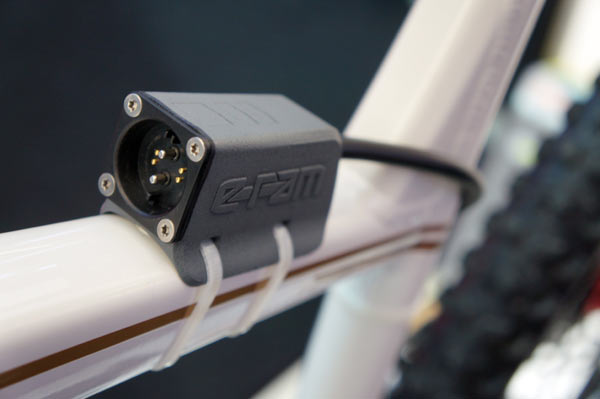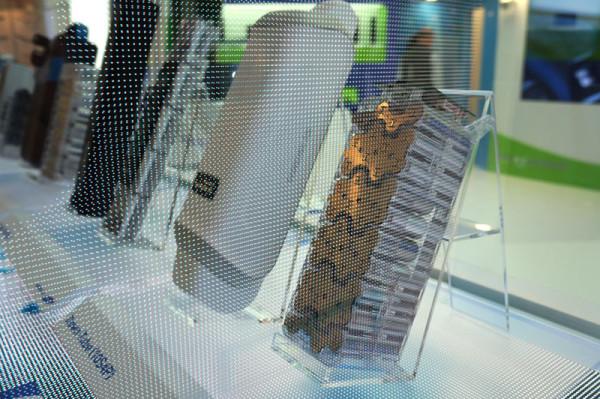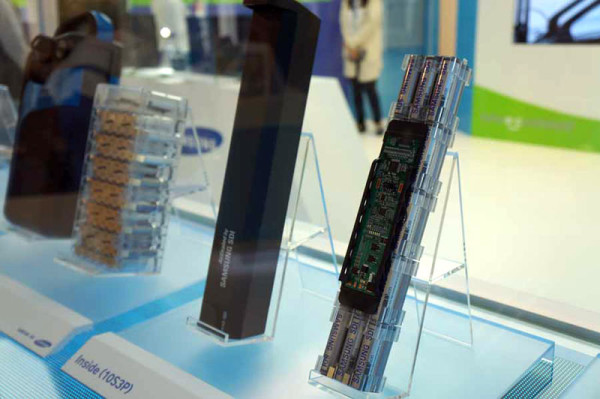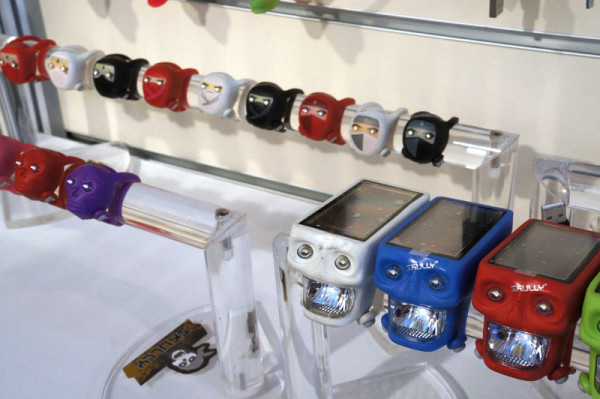There were no shortage of blinking, flashing, strobing and generally similar lights around the show floor, but a few stood out. Above, iDX had these brake lights that attache between the arms on a standard road brake caliper. The one above had a constant on or blinking setting, but the ones below used the caliper’s motion to activate the light, creating a real time brake light without the fuss and expense of accelerometers or needing any wires…
Click to enlarge this one and you’ll see that as the metal spring plate is squished between the caliper’s arms, it connects the current to light up the LED. I can’t find a website for these folks, so if you know it, leave it in the comments.
Innovity had these cool little LED lights attached to seatpost binders. Just push them and the light cycles through on, flash and off. Run times are 20 to 40 hours with an LR1130 button battery.
The clamps come in two sizes (31.8 and 34.9) and are made of AL7075 T6. The light unit is removable, and you’ve got the option of one or two bulbs and bolt-on or quick release clamp. Black, red or gold.
They also do mini tools that truly are miniature. This ones the smallest I’ve seen.
And finned brake pads. We’ve seen some interesting concepts from Stop Components/Kool Stop (which were also shown prior to that by Alligator), Scrub Components and even finned rotors from Jagwire. And of course you have Shimano’s IceTech pads. These take a little different tack by perforating the fins for added air flow through them.
Schmidt’s dynamo hubs and lights are beautiful and come in a range of colors and outputs.
The Edelux II is brighter and has a beam pattern that’s about twice as wide, spreading a 12m beam pattern across the road.
The lights are powered by one of several hubs, with options based on where you value weight, output at low speeds, disc brakes, etc.
Here’s what’s inside them.
Dienatronic’s E-Ram e-bike kit puts the motor around a crank arm to assist your pedal efforts. But, what sets it apart from the Pendix Efreshed system is the battery pack:
This 50V pack sits on your back. Just slip it in your backpack and run the long power cable to a plug on the bike:
It has an easy breakaway so your bike won’t be dragged along while you rag doll down the mountain. The design mounts to any standard threaded BSA bottom bracket shell and is designed to work with full suspension frames.
Ever wonder what’s inside those giant battery packs? Samsung took the cover off for us, showing that most are comprised of smaller cells arranged in a series to create higher voltage and amps. Depending on how you connect each end of the battery to the next one, you can bump either one, and if you connect bundles of them the other way, you can affect the other.
Science lesson: If you connect all of the positive sides together in parallel, you’ll increase total current (measured in Amps), which makes for a higher volume of electricity. If you connect them in a series, where a battery’s positive side to the next battery’s negative side, you increase the voltage (Volts), which is makes the power delivery faster, but doesn’t increase the volume. By wiring batteries in a combination of parallel and series, you can get the desired number of watts and control output, run time, etc. Volts x Amps = Watts. Parents, this makes for a great science experiment when making your own electromagnets, BTW.
We’ve got dynamos and we’ve got batteries, and now Skully wraps things up for us with solar. The larger Skully lights in the foreground have solar panels on the top to capture light and charge their batteries, which then power blinky LED eyes and the larger see-where-you’re-going reflector at the mouth. Those lights in the background? They’re powered by ninjas.
